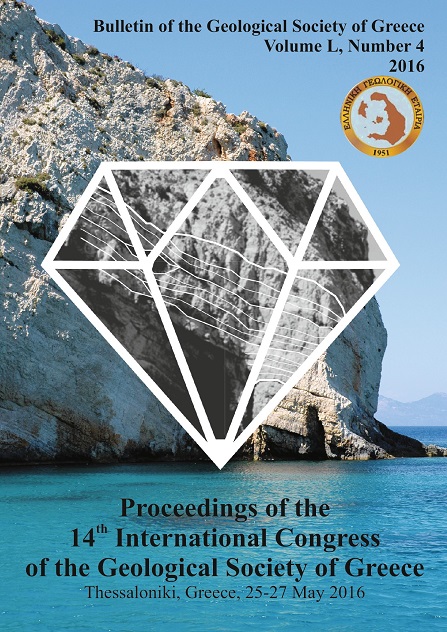GEO-ELECTRICAL MAPPING OF BEACHROCK IN VATERA BEACH, LESVOS

Abstract
Beachrock (Br) is encountered on the coastal zones, playing an important but also complex role in their morphodynamic evolution. Although Br has been widely studied, two important issues require further investigation. The first concerns the importance of the interaction of the dynamically changing coastal environment with the temporal changing surficial and underground hydrogeological balance. The second has to do with the spatial distribution and the evolution of Br with respect to the specific “host” coastal zone geo environment. This paper designates the electrical resistivity method as a tool that contribute in arguing in the abovementioned issues. The research comprised subsurface measurements with the DC resistivity method along two profiles located on Vatera beach (Lesvos Island), where there is a significant Br outcrops. Twelve geoelectric soundings were carried out using the Axial Pole-Dipole electrode array. The electrical resistively measurements permitted an indirect estimation of TDS, which depicts the coastal interface of fresh water - sea water. The interpreted geoelectric model shows two thin formations attributed to Br. The first is the inland extension of the Br outcrop and the second it is believed to be a primary stage of Br build up.
Article Details
- How to Cite
-
Meligonitis, R., Galanopoulos, D., Hasiotis, T., & Velegrakis, A. (2016). GEO-ELECTRICAL MAPPING OF BEACHROCK IN VATERA BEACH, LESVOS. Bulletin of the Geological Society of Greece, 50(4), 2323–2331. https://doi.org/10.12681/bgsg.14298
- Section
- Environmental Geology

This work is licensed under a Creative Commons Attribution-NonCommercial 4.0 International License.
Authors who publish with this journal agree to the following terms:
Authors retain copyright and grant the journal right of first publication with the work simultaneously licensed under a Creative Commons Attribution Non-Commercial License that allows others to share the work with an acknowledgement of the work's authorship and initial publication in this journal.
Authors are able to enter into separate, additional contractual arrangements for the non-exclusive distribution of the journal's published version of the work (e.g. post it to an institutional repository or publish it in a book), with an acknowledgement of its initial publication in this journal. Authors are permitted and encouraged to post their work online (preferably in institutional repositories or on their website) prior to and during the submission process, as it can lead to productive exchanges, as well as earlier and greater citation of published work.


